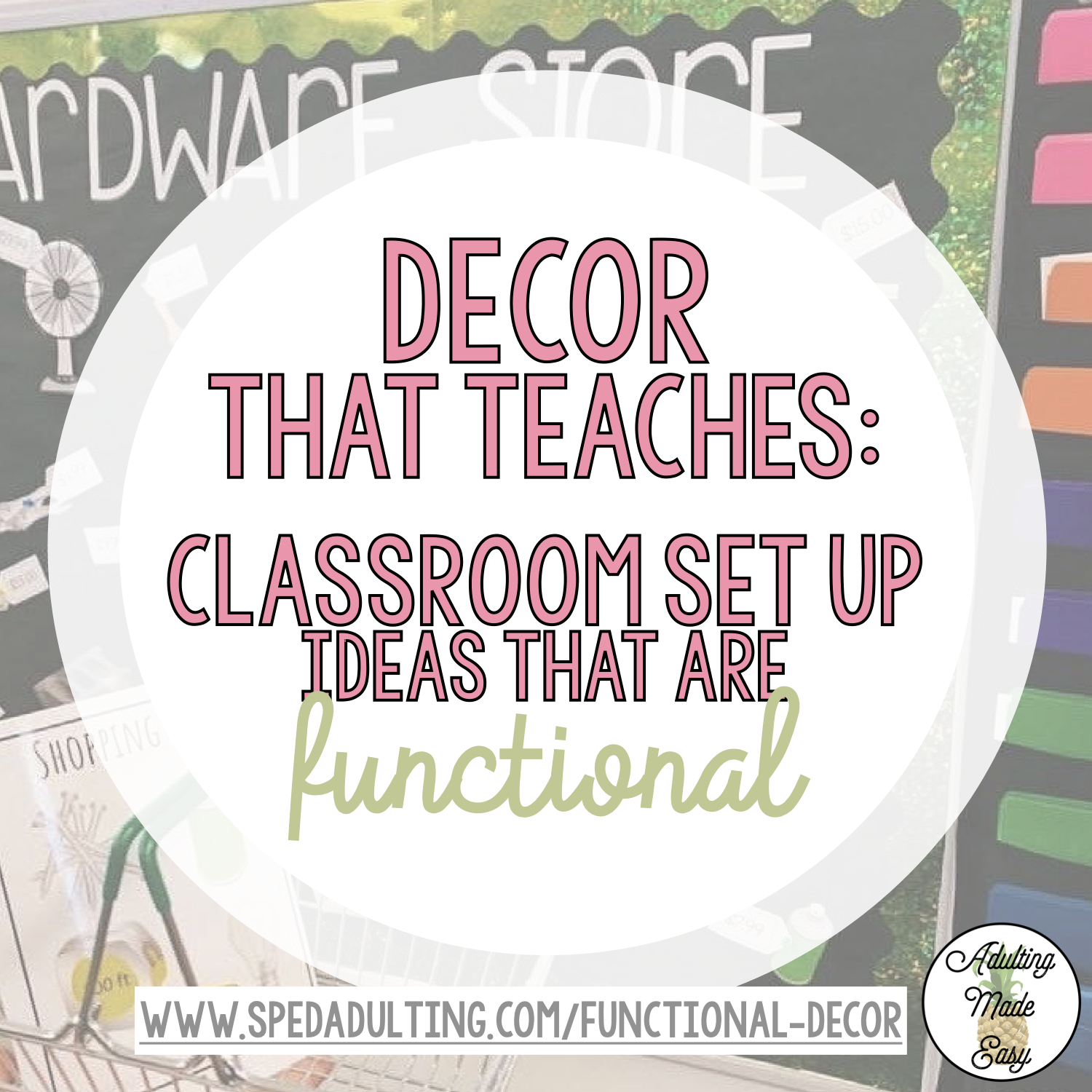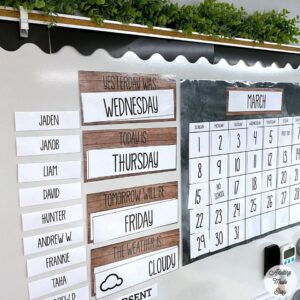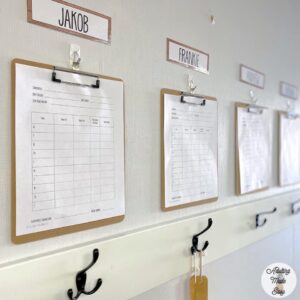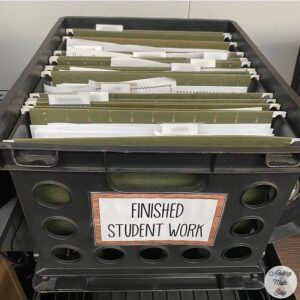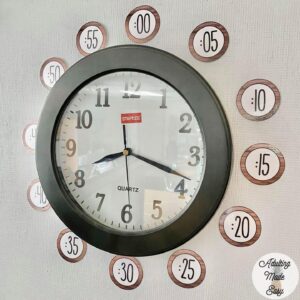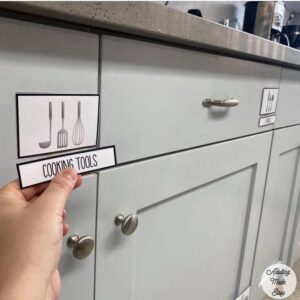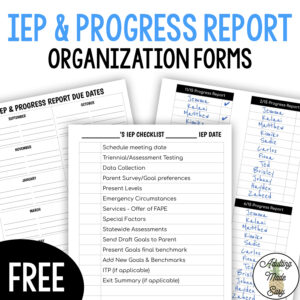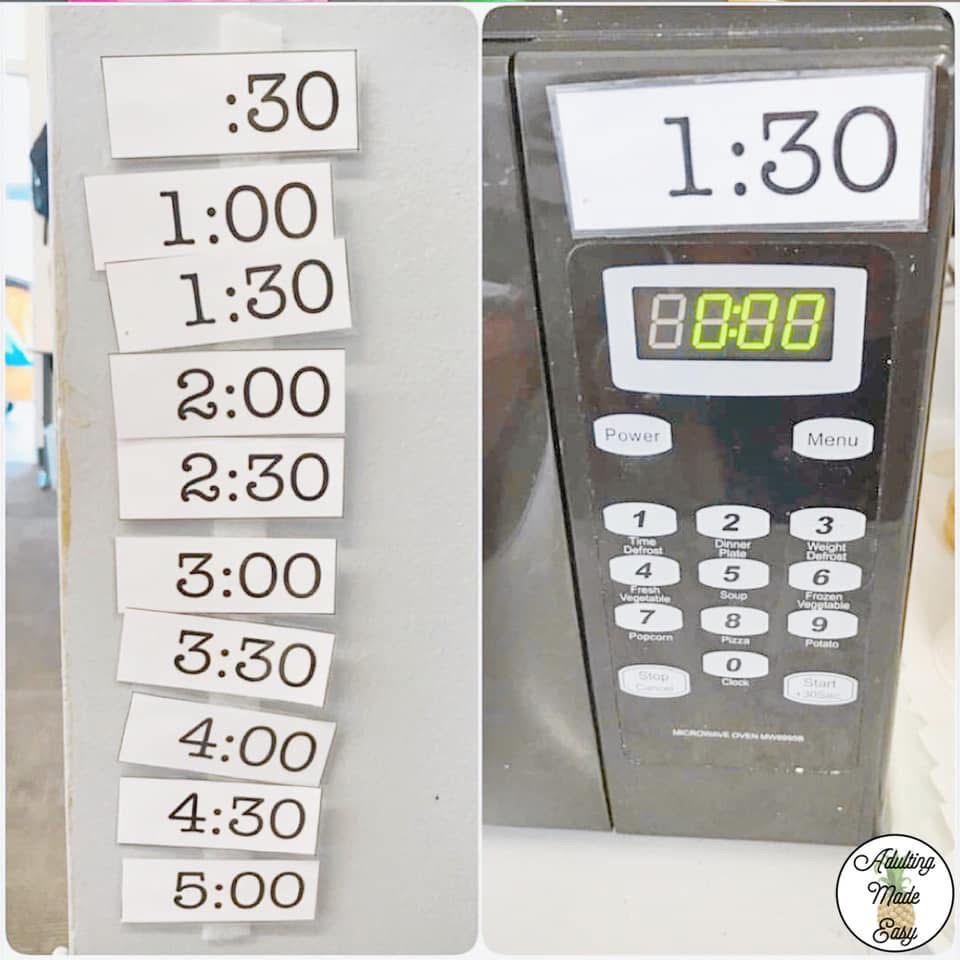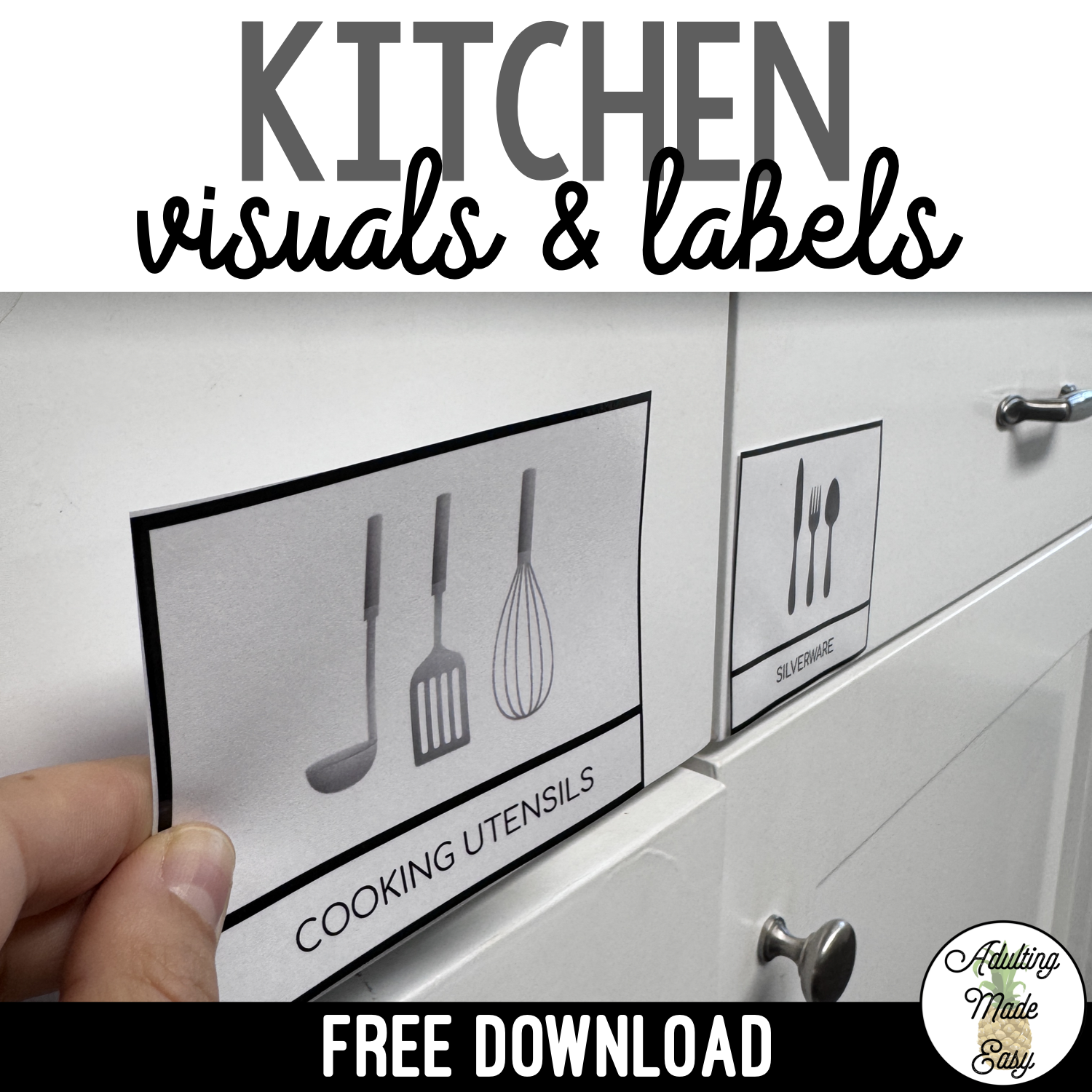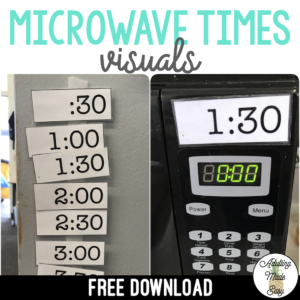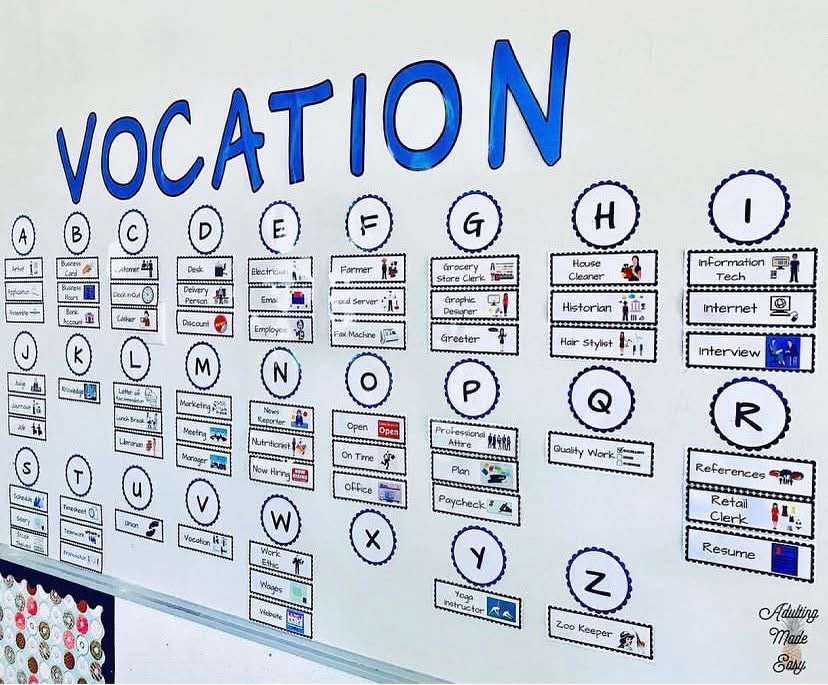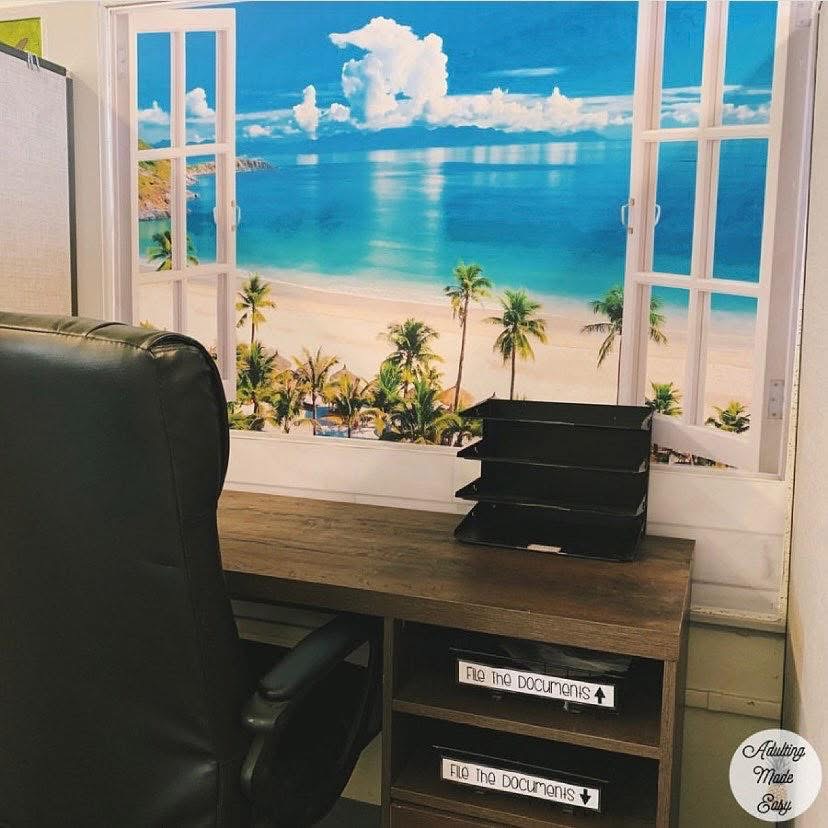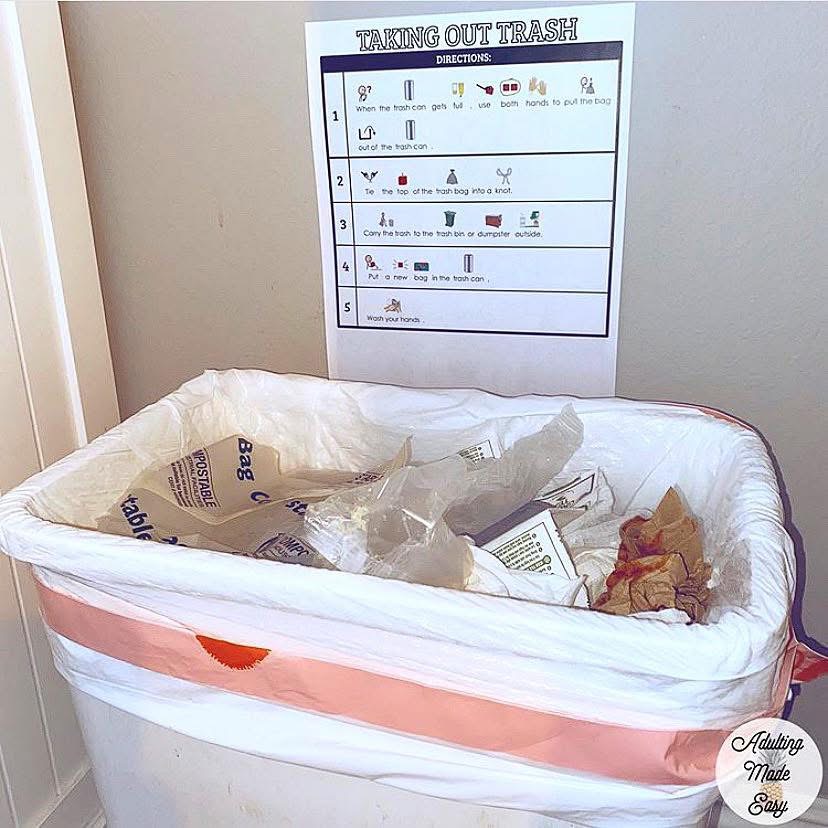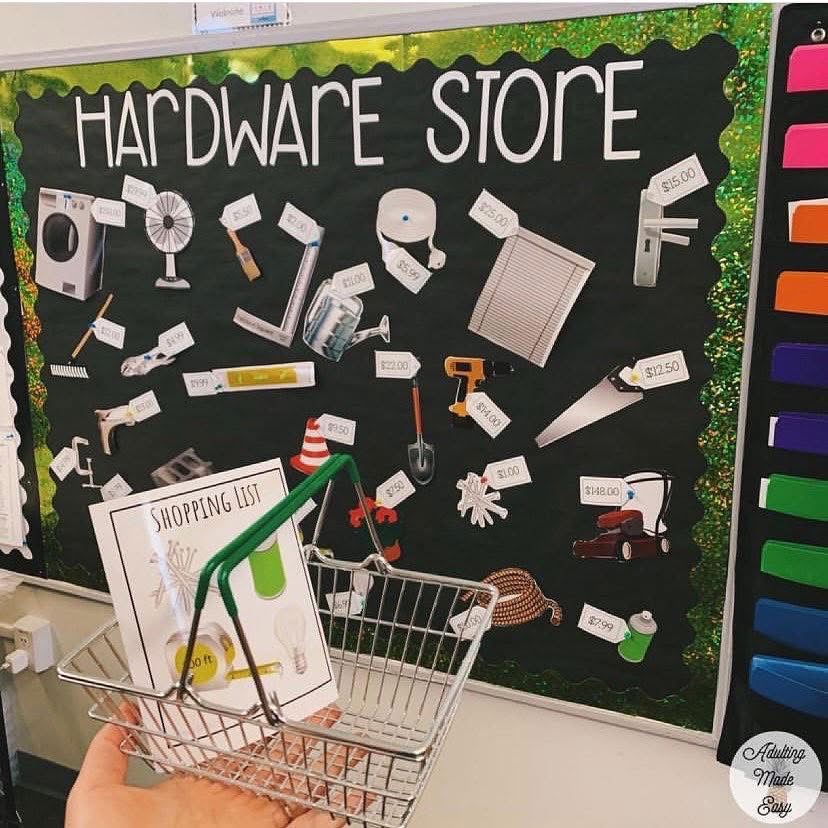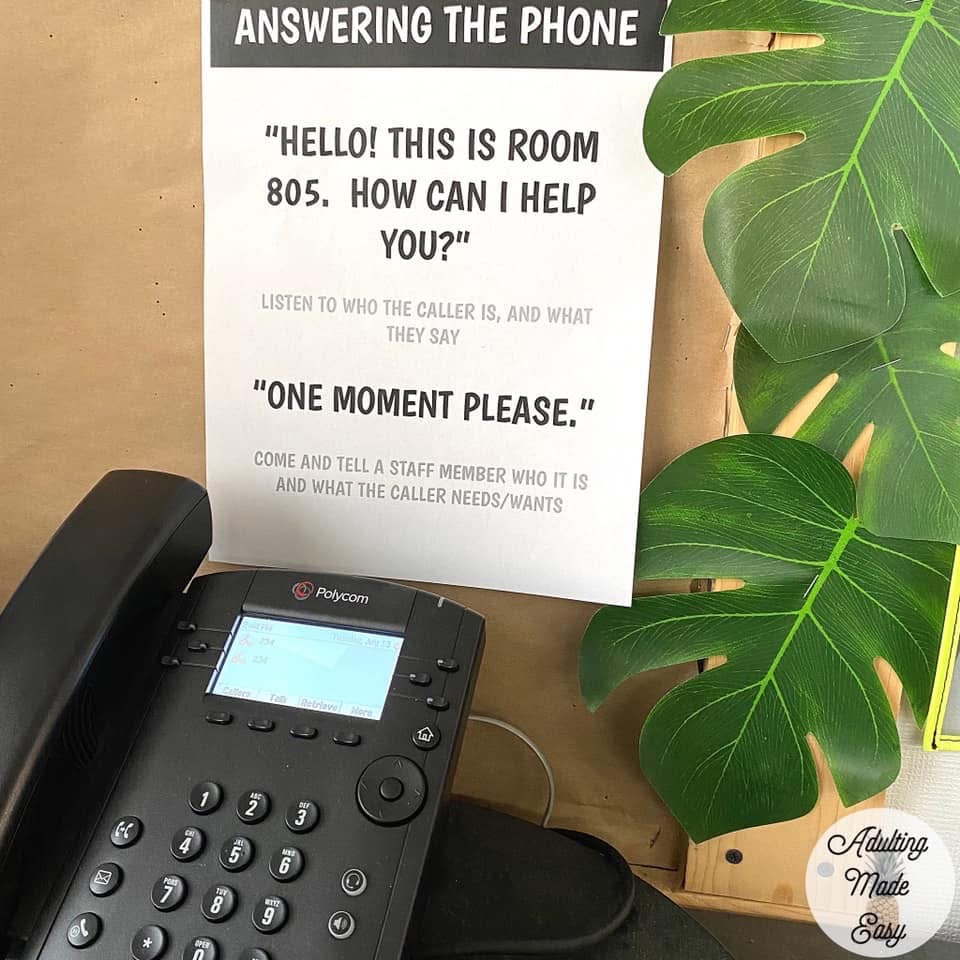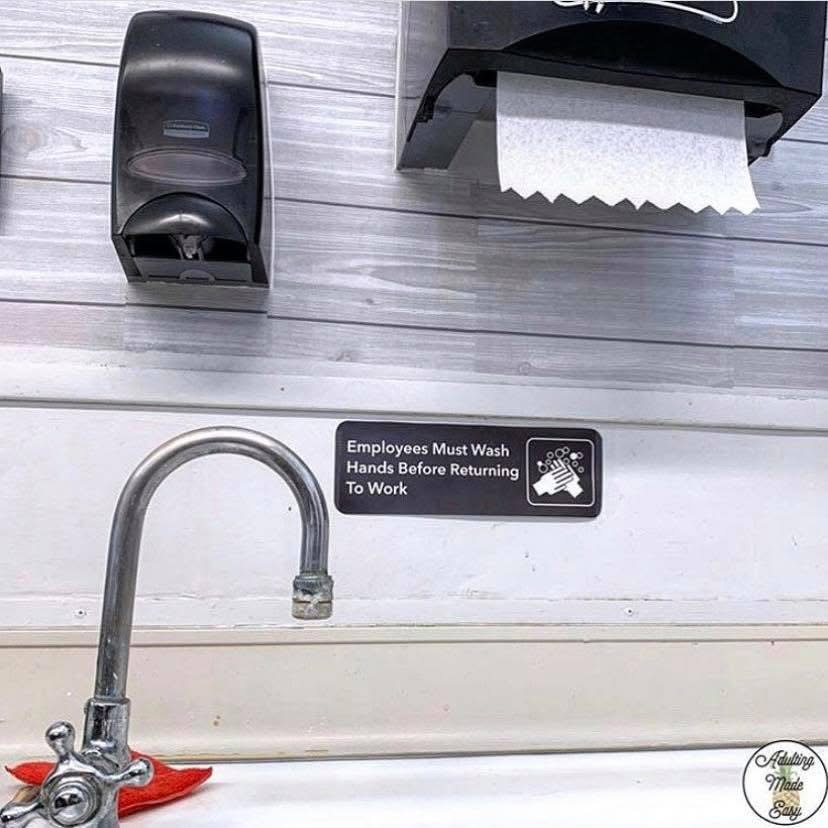Let’s talk classroom decor. For many teachers, decorating the classroom is one of the most enjoyable parts of setting up—a chance to make the space welcoming and reflect your personality. While aesthetically pleasing “Instagram-worthy” classrooms are fun to look at, it’s essential to prioritize functionality before diving into purchasing or putting up decorations.
Always start by considering your students—their IEP goals, learning styles, and support needs. Thoughtful classroom decor can do more than just look good; it can serve as a powerful visual support or functional tool. Below are some creative, out-of-the-box ideas for designing a classroom that’s both purposeful and visually engaging.
INTERACTIVE CALENDAR
Let’s start with a classroom essential—the calendar. There are many ways to set one up, depending on the needs of your students. You might opt for a simple version that displays just the month and days, or enhance it by including birthdays and important events. As pictured, you can also make your calendar interactive by incorporating daily components like identifying yesterday, today, and tomorrow, as well as discussing the weather. These routines not only build calendar skills but also support language, memory, and time concepts in a meaningful, consistent way.
LABELS
Labeled supplies and areas play a key role in keeping the classroom organized and accessible for everyone. More than just tidy—they’re a functional literacy tool that promotes independence and supports reading in context. In the photo above, you’ll see labeled student timesheets used for on- and off-campus jobs, along with designated backpack hooks. Below, a labeled crate is used for filing completed work—an excellent way for students to practice job skills and take ownership of their responsibilities.
Pictured above are visual labels designed to support students in reading an analog clock. While analog clocks may seem “outdated” in a world dominated by phones and digital displays, they’re still commonly found in workplaces and community settings. Teaching students to read them remains a valuable life skill. The labels shown above help break down the clock into manageable parts, making it easier for learners to grasp. Best of all, these visuals are available in editable formats so you can customize them to meet the specific needs of your classroom.
-
Product on sale
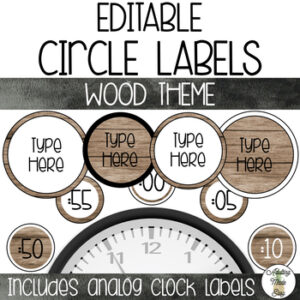 EDITABLE Circle & Clock Labels – Wood ThemeOriginal price was: $3.00.$1.00Current price is: $1.00.
EDITABLE Circle & Clock Labels – Wood ThemeOriginal price was: $3.00.$1.00Current price is: $1.00. -
Product on sale
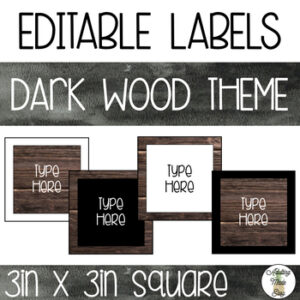 EDITABLE Square Labels – Dark Wood ThemeOriginal price was: $1.50.$1.00Current price is: $1.00.
EDITABLE Square Labels – Dark Wood ThemeOriginal price was: $1.50.$1.00Current price is: $1.00. -
Product on sale
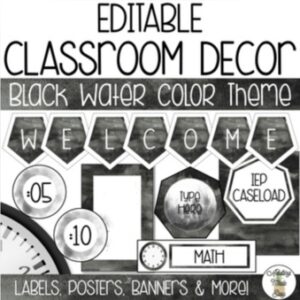 EDITABLE Black Watercolor Classroom Theme BUNDLEOriginal price was: $20.50.$13.25Current price is: $13.25.
EDITABLE Black Watercolor Classroom Theme BUNDLEOriginal price was: $20.50.$13.25Current price is: $13.25. -
Product on sale
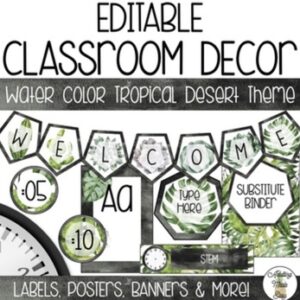 EDITABLE Watercolor Tropical Desert Classroom Theme BUNDLEOriginal price was: $24.00.$16.99Current price is: $16.99.
EDITABLE Watercolor Tropical Desert Classroom Theme BUNDLEOriginal price was: $24.00.$16.99Current price is: $16.99.
KITCHEN VISUALS
Above are kitchen labels and visuals designed to support student independence. Ever stayed at an Airbnb or someone else’s home and couldn’t find anything in the kitchen? That same sense of confusion is what many students experience when learning to navigate where dishes and utensils go. Clear, consistent labels help reduce frustration, build functional routines, and support life skills like putting away or retrieving kitchen items independently. You can download these labels for free to use in your own classroom setup.
Visuals created to help students practice reading food labels and entering the correct cook time into a microwave. This activity supports independence at home or in the life skills classroom by teaching students how to locate and understand cooking instructions—such as time and temperature—on packaged foods. These step-by-step supports build both literacy and daily living skills in a functional, meaningful way.
VOCATIONAL SKILLS
WORD WALL
This word wall is designed to be age-appropriate for older students, with a focus on careers, occupations, and essential job skill vocabulary. It’s a great way to build functional language, support IEP goals, and expose students to terms they’ll encounter in real-world work environments. Displaying relevant vocabulary helps reinforce concepts during job prep lessons, community-based instruction, and classroom discussions about future goals. Scroll down to download this word wall.
INDEPENDENT WORK AREA
Here’s a fun and functional twist on an independent work area. This space is designed to be low-distraction, helping students stay focused on their tasks while promoting independence. The setup shown above mimics a calm, professional office environment—adding a touch of real-world relevance while keeping the space inviting and purposeful. Creating a work area like this not only supports task completion but also helps students generalize skills to future job or office settings.
TASK ANALYSIS
Pictured is a visual support for classroom jobs. This tool uses task analysis to break down each job into manageable steps, helping students practice and complete tasks independently. Visuals like this promote confidence, reduce prompting, and teach important life and job skills by clearly outlining what needs to be done—one step at a time. Scroll down to download this task analysis that is part of a classroom jobs set.
INTERACTIVE BULLETIN BOARDS
Interactive bulletin board or peg board activities are engaging and a great way to practice hands-on life skills & job skills. These activities can be done on the board for a group lesson, centers, or as an independent work task. These types of activities are especially great for special education learners to get some practice before heading out in the community!
You can do a variety of activities and practice a variety of skills on the bulletin board or peg board which include practicing fulfilling orders, money math, dollar up, addition, tax, stocking inventory, sorting categories, and much more! Change out the bulletin boards every few months to work on different skills or to go with a theme.
PHONE SCRIPT
Every moment can be a learning opportunity—even answering the classroom phone!
What may seem like a simple, everyday task can actually be quite complex for many students. Having students practice answering the phone is a great way to build communication, social, and vocational skills in a real-world context.
This routine allows students to work on scripted responses, such as greeting the caller and identifying the classroom. From there, they may need to relay a message, retrieve a specific person, or write down information—all valuable tasks for future employment and daily life. Using visual supports or cue cards can help scaffold the process and build confidence. Download this script for FREE HERE.
-
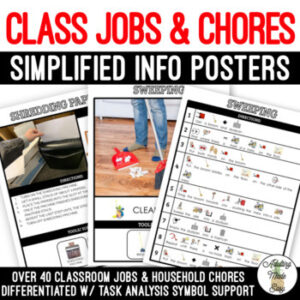 Classroom Jobs & Chores Posters SS$8.00
Classroom Jobs & Chores Posters SS$8.00 -
Product on sale
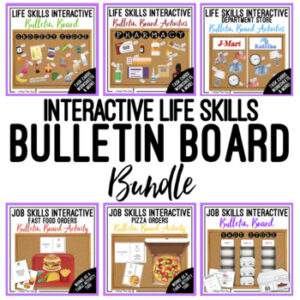 Interactive Bulletin Board Work Task BundleOriginal price was: $46.00.$32.08Current price is: $32.08.
Interactive Bulletin Board Work Task BundleOriginal price was: $46.00.$32.08Current price is: $32.08. -
Product on sale
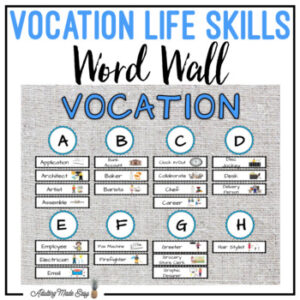 Vocation Life Skills Word WallOriginal price was: $3.00.$2.00Current price is: $2.00.
Vocation Life Skills Word WallOriginal price was: $3.00.$2.00Current price is: $2.00.
An easy and effective way to practice real-world vocational skills is by incorporating workplace and community signs into your classroom environment. These signs help students become familiar with common visuals they’ll encounter on the job or in the community. For example, the photo below shows a “Employees Must Wash Hands Before Returning to Work” sign placed by the sink—just like in a real workplace. Other useful signs might include Exit, First Aid, or Restroom. A quick Google search will usually turn up free printable versions, making this a simple yet meaningful addition to your classroom setup.
Final Thoughts
When setting up a classroom, it’s easy to get caught up in making it look picture-perfect, but the real magic happens when your decor teaches. Thoughtfully chosen visuals, labels, and environmental supports can foster independence, reinforce key skills, and create a space where every element has a purpose. Whether it’s a word wall that builds vocational vocabulary or a labeled sink that teaches hygiene routines, functional decor turns your classroom into a learning tool in itself. As you plan your space, remember: it doesn’t have to be Pinterest-perfect, it just needs to work for your students.
Thanks for reading!

